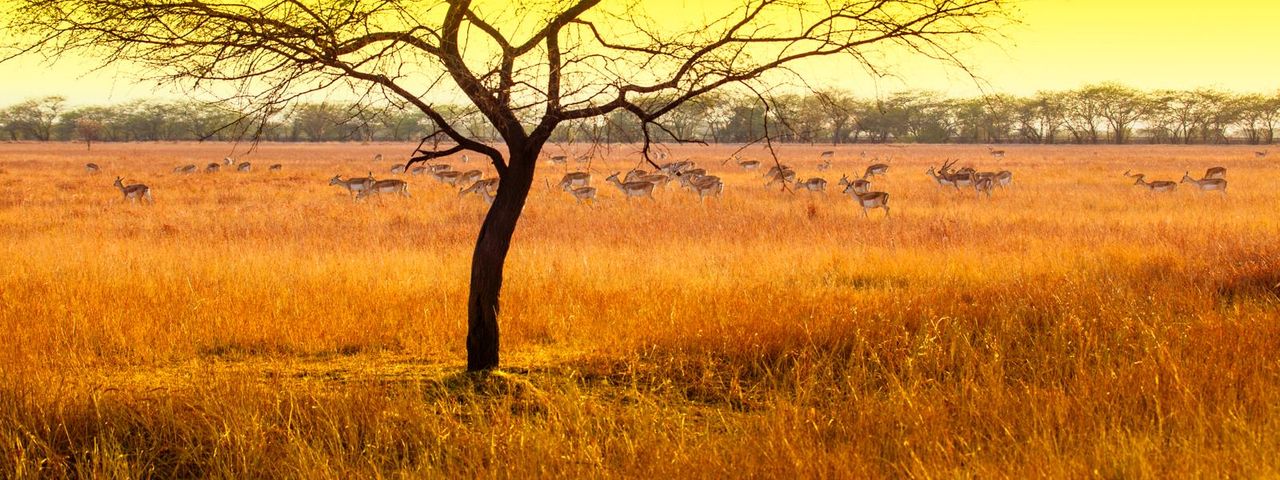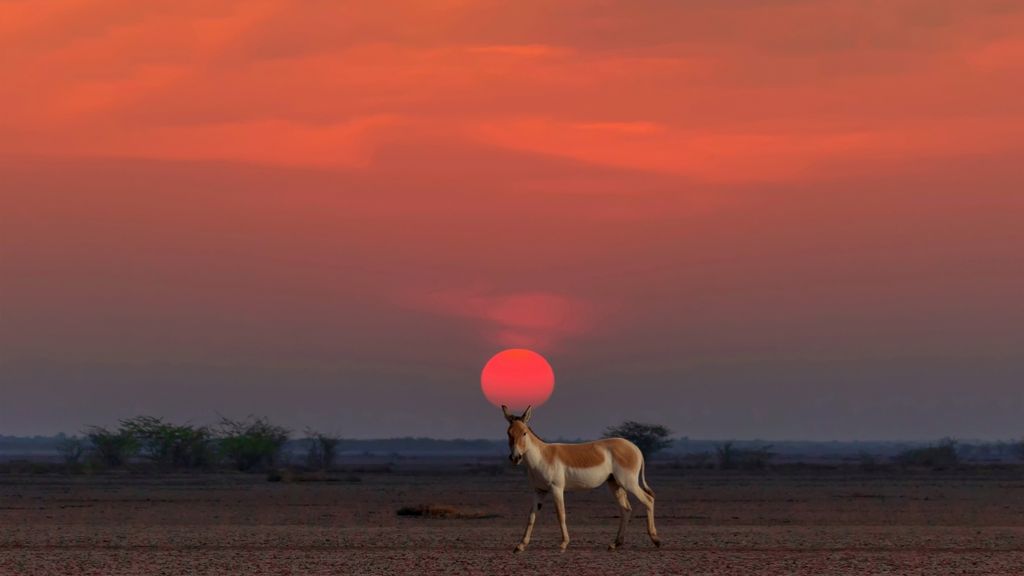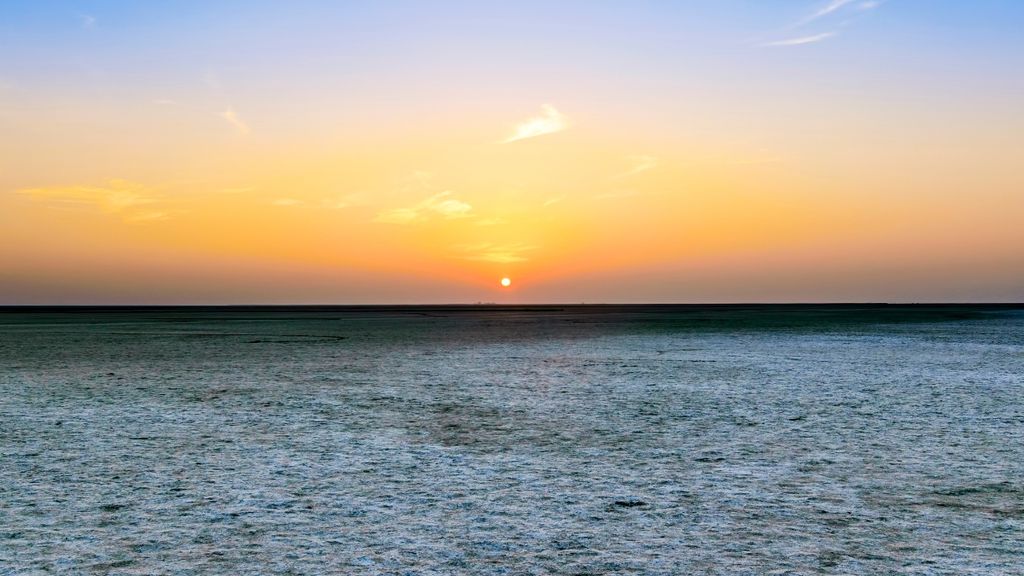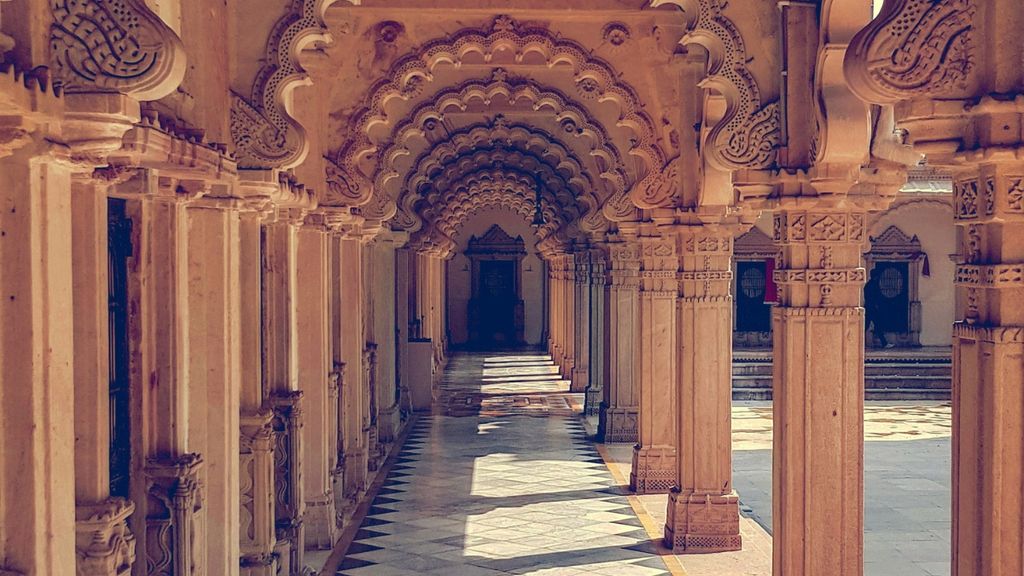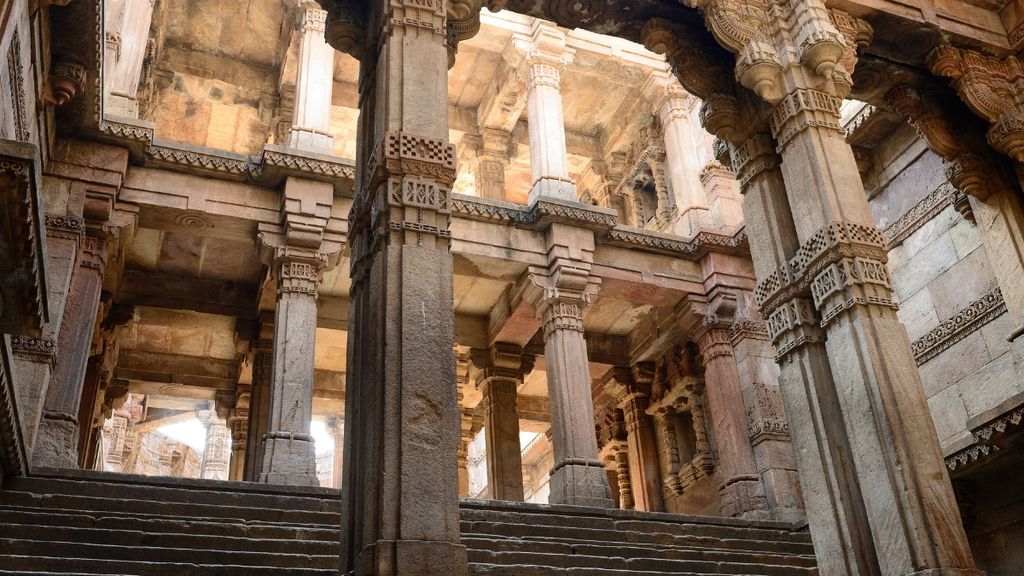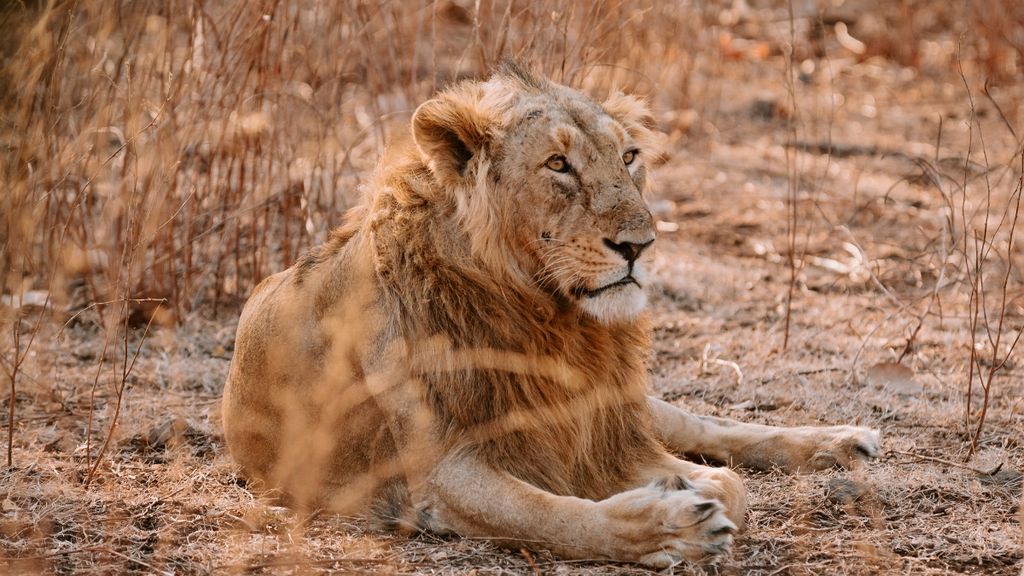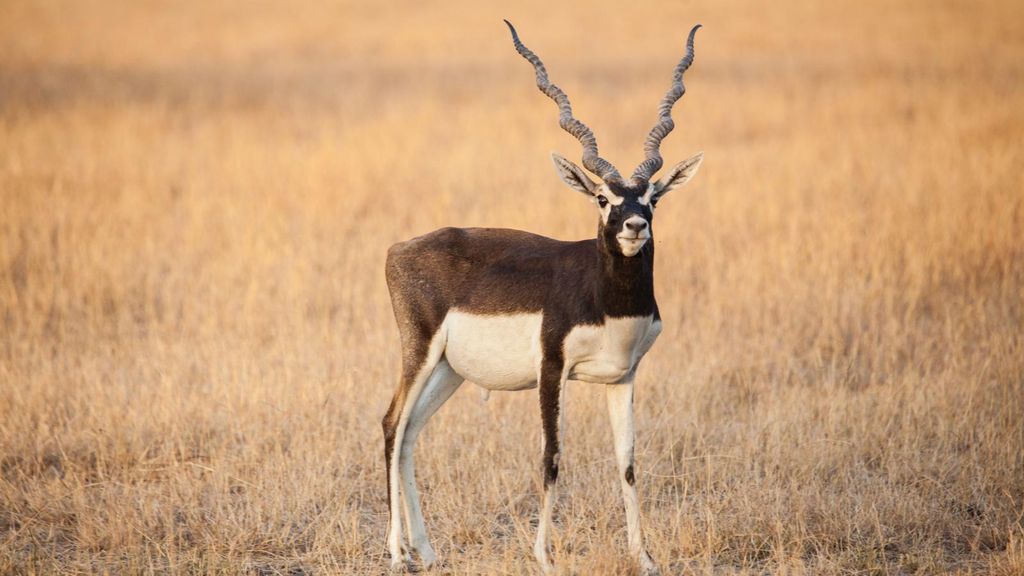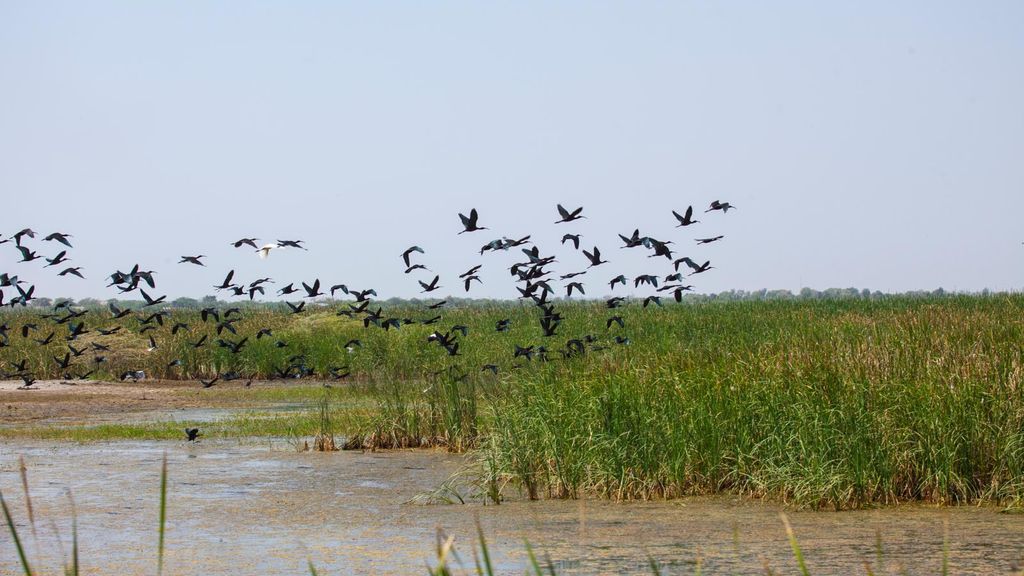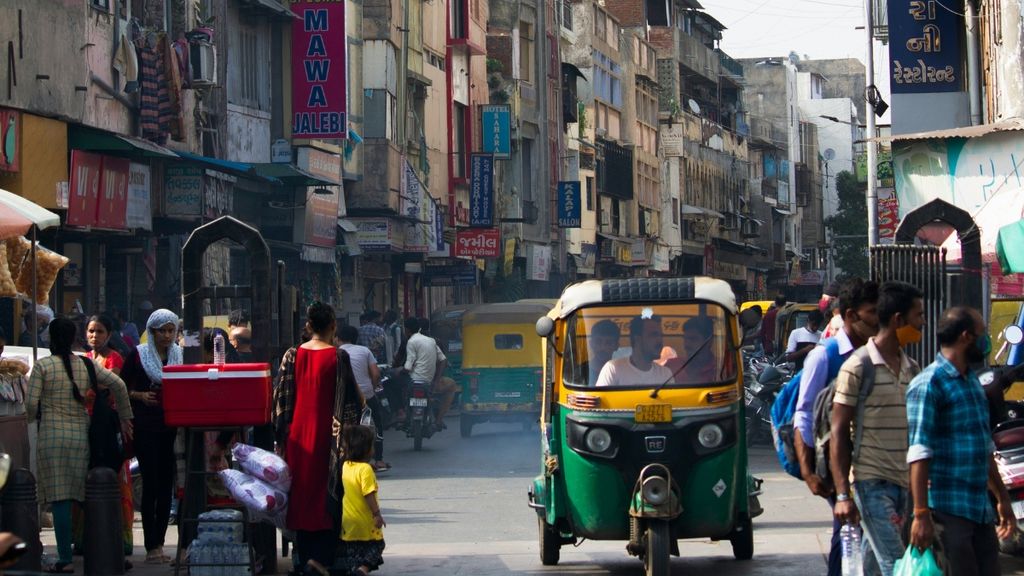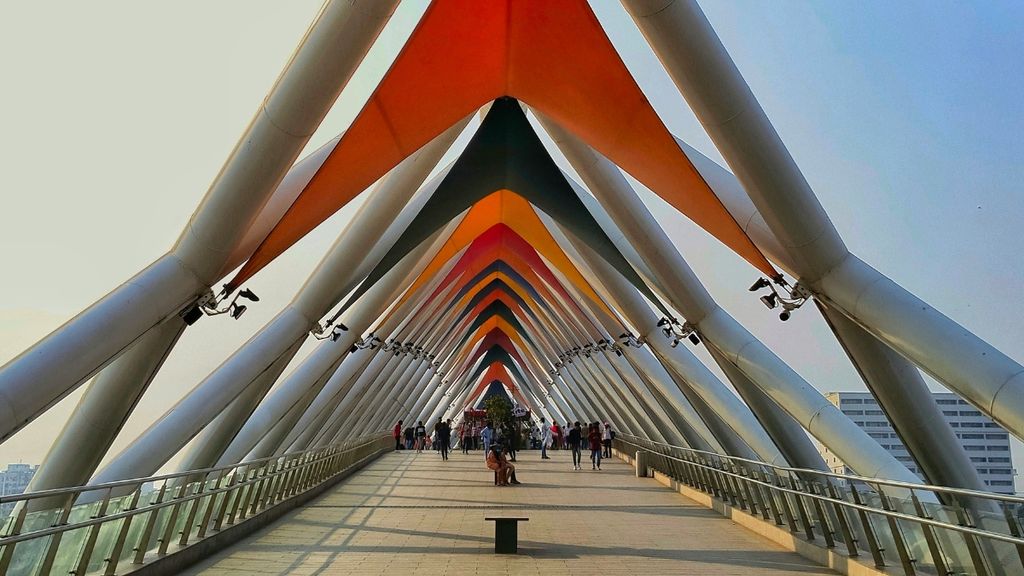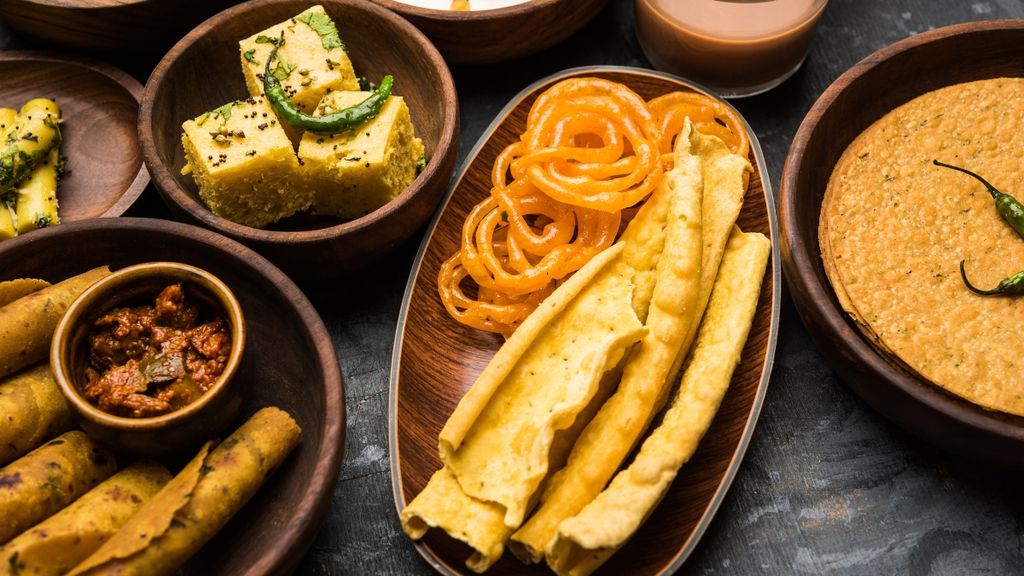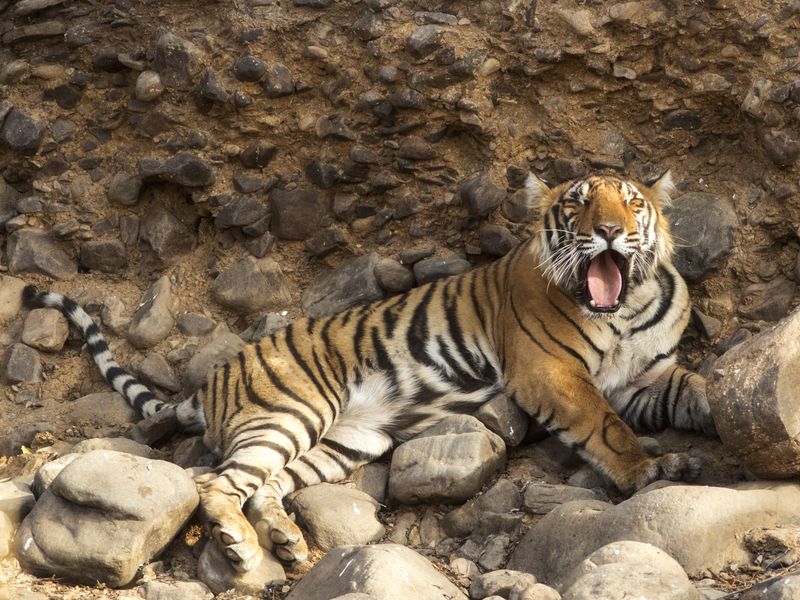Wide Skies of Gujarat
Between the Arabian Sea and the borders of mighty Maharashtra, Gujarat sits quietly just beyond India’s spotlight. Once home to more than 200 royal states, its regal splendour is ripe for discovery, waiting to surprise those willing to venture just a little further (even where it’s a little crumbly around the edges!) Explore heritage cities, spiritual legacies, salt deserts, rare wildlife habitats and intricate craft traditions, receiving a warm welcome into village communities and grand palaces alike.
Begin in Ahmedabad, exploring the city’s intricate pol neighbourhoods with centuries of community spirit built into their walls. Visit former princely bastions, such as Baroda, where the Maharajah’s residence is said to be four times the size of Buckingham Palace, and the eclectic museum at Gondal. Stay in family-run ancestral homes in quiet Muli and remote Dared, where former ruling families have become champions of heritage, conservation and craftsmanship.
Find rich landscapes, from the shimmering salt flats of the Little and Great Ranns of Kutch to the tropical grasslands of Velavadar, and the forested hills of Gir National Park where the Asiatic lion still roams wild. Further afield lies India’s first marine National Park, and a coastline edged with wild beaches and bird-filled wetlands.
There’s no Golden Triangle shape to journeys through Gujarat - each is a bespoke selection of contrasting landscapes, historic sights and cultural highlife. There’s ample space to be truly Selective, all served alongside the sweet-spicy-sour flavours of authentic Gujarati cuisine.
Ahmedabad’s Cultural Tapestry
Wandering through the intricate lanes of Ahmedabad’s old city feels like walking through a living tapestry; rather apt given the city's legacy as a textile powerhouse. In India’s first UNESCO Urban World Heritage Site, the city’s ancient pol gated communities housed generations in tall, carved-wood homes clustered around Jain temples, mosques, wells and elaborate bird-feeders. It’s a historic example of diversity and co-existence, each neighbourhood separate yet far from closed off, with institutions representing seven major religions woven into its fabric.
Outside of the old walls, contemplate the city's place in Gandhi’s story, at the heart of India’s freedom movement, by his peaceful riverside ashram. Celebrate the city’s moniker as the ‘Manchester of the East’ at its acclaimed museums, and admire the symmetry of the famed Gujarati stepwells. Step into modern Ahmedabad, home to ambitious architecture, design schools and cricket’s largest capacity stadium, all part of the area's rich texture. Taste Gujarat’s take on a thali, and munch on street food favorites like fafda, khakhra, and gathiya at busy urban markets.
Salt Flat Wilderness
It’s hard to grasp the otherworldliness of the Little Rann of Kutch until you’re in the middle of it, surrounded by cracked salt flats stretching to the horizon, shimmering with heat. Once part of the Arabian Sea, this vast, arid landscape is now one of India’s most unusual ecosystems. Its ‘bets’ - raised pockets of scrub and grassland that act as islands of life - are the refuge of the endangered Asiatic wild ass. This distinctive, desert-adapted species is surprisingly elegant, galloping across the desert at remarkable speed, their pale coats catching the light.
Jeep safaris also offer the chance to spot desert foxes, jungle cats, Indian wolves and rich birdlife, especially during the winter migration season when flamingos and cranes descend in impressive numbers. Visit villages and salt farms using centuries old harvesting techniques and, if time allows, head further into the 7,505 square kilometers of the ‘Great Rann’ for wild landscapes, intriguing archaeology, remote communities and kaleidoscopic textiles.
Layers of Muli
There’s something mesmerising about seeing Patola weaving in action - a complex technique where warp and weft threads are tie-dyed before weaving, resulting in perfectly aligned patterns that seem impossible to the untrained observer. The many types of weaving and craftwork draw many to visit the quiet, former-princely state of Muli, and offer a window into layered local traditions of expert artisans and royal patronage.
The former royal family welcomes guests to Ambika Nivas Palace, now a boutique heritage hotel. Explore the surroundings, including the Mandavraiji Sun Temple, said to be the second oldest Swaminarayan temple in the world and the Raatba-ni-vav stepwell and smaller local shrines. Experience a thought provoking journey through the ‘Cotton Story’, from farm to finished fabric, and try artisanal cheeses at the Panchal Dairy.
Temples, Palaces & Toy Cars
Gondal is a princely state known as much for reform as for grandeur. Under the Jadeja Rajputs, Gondal introduced pioneering public health programmes and free education for girls, legacies that still shape the city today.
Delve below the surface at the Navlakha Palace Museum to see eclectically-displayed collections of royal memorabilia, model boats, birds eggs, vintage toy cars and carriages. The region’s heritage hotels follow the same lines, with dusty vintage furniture, colonial curios, antique cars and, in one case, a train carriage! The sparkling white Shri Swaminarayan Mandir temple shines in the afternoon sun, and with rainbow-hued projections of sound and light.
Lions’ Refuge
There’s a hush that falls over the forests of Gir National Park at dawn, broken only by bird calls, rustling leaves, and, if you're lucky, the low roar of a lion. Gir was protected in the early 20th century when the last ruling Nawab of Junagadh, known for his love of animals, banned hunting and turned his private grounds into a sanctuary, saving these big cats from extinction. This is the only place on earth where Asiatic lions still roam wild - smaller and paler than its African cousins, but unmistakably regal - and the park now has a population of over 600.
Drive the densely forested hills for glimpses of lions, leopard, and other species which have thrived under the park’s protection. Look out for Sambar deer, langurs, abundant birdlife and the elusive striped hyena. Learn the stories of the Maldhari pastoralists, who have lived in harmony with Gir’s ecosystem for generations, and the Siddi community, descendants of African migrants who preserve their cultural heritage through dance and song. Gir isn’t only a safari destination, but a living landscape, where history, biodiversity, and community meet.
Under the Neem Tree
Tucked into the golden rural landscape, the village of Dared is small in size but generous in character. At its centre stands the beautifully restored Darbargadh, the 300-year-old ancestral home of the local royal family, now open to guests as a living piece of history. It’s a place where hospitality flows, and where traditions are something practised rather than preserved. Relax by the pool, in airy courtyards, or underneath the boughs of the Neem tree, well known in Gujarat for its medicinal properties.
Wander through the lanes of the village surrounding Darbargadh with your hosts, pausing to meet local artisans. Watch diamond polishers work with quiet concentration, chat with goldsmiths, terracotta potters, and an ingenious creator of modified vehicles whose workshop is part innovation lab, part local legend. Take a sunset jeep ride through the fields for a riverside high tea, and wonder at rural Gujarat in the soft, end-of-day light.
An Unexpected National Park
Between two rivers, the gently undulating plains of Velavadar National Park feel like another world entirely. This rare patch of protected tropical grassland is a sanctuary for India’s most elegant antelope, the blackbuck, whose spiralled horns and high-speed leaps are as mesmerising as the landscape itself. With a population of around 1,800, the thriving herds are easy to spot, particularly in the cooler hours of morning and dusk.
Though small in scale, this area is rich in biodiversity. Blue bulls, striped hyenas, jungle cats, and even the increasingly visible Indian wolf roam these open plains. In the winter months, thousands of migratory birds arrive from Central Asia and Siberia, filling the skies with movement. For those drawn to quieter spaces and open skies, Velavadar offers rare, rewarding and relaxed wildlife encounters.
History & Majesty
Known today as Vadodara, the elegant city of Baroda was once the seat of the Gaekwad dynasty, whose progressive rule helped shape it into one of India’s great cultural centres. Princely grandeur is on full display at the Laxmi Vilas Palace, an ornate marvel said to be four times the size of Buckingham Palace, where visitors are typically sprinkled with rose petals on arrival. Stained glass, Venetian mosaics and copious chandeliers define the space.
However, Baroda’s is much more than regal excess. Stroll beneath banyan trees in the public gardens, explore the excellent Baroda Museum and Picture Gallery, and shop in the morning market. An hour’s drive away is the UNESCO-listed Champaner–Pavagadh Archaeological Park, a little-visited site preserving a pre-Mughal Islamic city with ornate mosques, stepwells, fort walls and trails winding up through rocky outcrops. Continue deeper into the surrounding countryside, make your way to Baroda Airport or return to Ahmedabad to complete your Gujarathi journey.
Beguiled by Gujarat?
This state offers more than enough to merit a longer stay. Take a few more days to adventure out into the Great Rann of Kutch, then make your way to Mandvi on the Arabian Sea Coast, known for its out of the way beaches and wooden dhow-building industry. Add Palitana to your trip, and make the early morning climb up 3500 steps to the Jain temples on Mount Shertunjaya. Gujarat is also a perfect partner to Rajasthan, for a right-royal arch and a low-key contrast as you move away from the crowds, or for Madhaya Pradesh, to add Bengal Tiger to your Asiatic Lion.
A note on cost…
The guide price of £4,190US$5,490 is a per person price (not including international flights) staying 2 nights in Ahmedabad, 2 nights near the Little Rann of Kutch, 2 nights in Muli, 1 night in Gondal, 2 nights in Gir National Park, 3 nights in Dared, 2 nights in Velavadar and 2 nights in Baroda/Vadodara, all in our favourite mid-range hotels.
